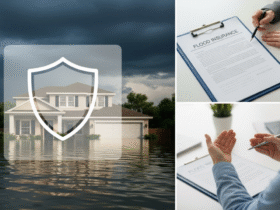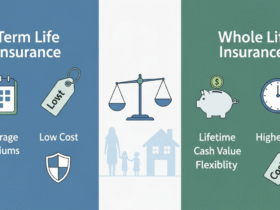Dear new homeowner,
First of all, hold on a second. Let’s acknowledge this monumental moment together. No doubt, this is one of the critical milestones in life and you’ve made it—you can now finally step into a space you can call your very own. Now, if you are still unpacking boxes, mentally storing away furniture, whatever it is, there is one crucial responsibility that deserves your immediate focus: insuring your home properly.
Thinking of home insurance literally as “home” insurance is far too simplistic. In fact, viewing it as a mere checkbox item to be completed when closing is equally harmful—it’s neither legally mandated nor only required by your lender. Lenders certainly view it this way, but the truth is it is far more important. Rather, it is an insurance claim buffer protecting your home against losses. This is your way of saying, “I’ve got your back, so whatever happens, bring it on.”
Now, you need to dig deep into what home insurance really is and comprehensively understand what needs to be done to ensure that policies taken right from the beginning won’t result in errors later down the line.
Key Takeaways
- It is better to base your insurance on replacement cost instead of market value.
- Make sure to keep your coverage current, especially after renovations or new purchases.
- Make sure to avoid under-insuring personal belongings—document everything thoroughly.
- Have a clear understanding of the exclusions in your policy and add coverage if necessary.
- Analyze your policy every year to ensure it continues meeting your requirements.
Understanding What You’re Really Paying For
Home insurance acts as your safety net. Should disaster strike—a fire, or a pipe flooding your basement, or a ‘theft of service’ where someone steals your electronics—then your insurance policy stands ready to assist you in recovering. Most policies will, at the very least, cover the dwelling and the homeowners contents insurance. In addition, it provides coverage for liability which entails that if someone gets injured on your property grounds, you will not face the medical costs all by yourself.
Here is something all novice homeowners must be made aware of: all policies are different. Some may include an accidental water damage cover, while others will explicitly deny it. Some policies extend protection to belongings during relocation, while others begin coverage only post-unpacking. These alterations are always put in fine print; so it is important to read that part. What you are not aware of can greatly increase costs than initially anticipated.
Getting the Numbers Right: Market Value vs. Rebuild Cost
Now let’s address digits and figures because new homeowners assume a lot of things at this stage. Many individuals think that homes need to be insured for what the marking is set at. However, the market value isn’t the number that is actually important to focus on. Rather, what is important is the replacement cost.
Think about your home for a second. House was completely wiped out without a trace. Now, estimating the cost to rebuild it exactly the same with all the materials and square footage, that would be replacement cost. That number is different for every individual and location, so it is important to have that covered by insurance. Getting this briefly leads to underinsurance and major major unavoidable expenses.
Properly used number and value can be achieved through spreadsheets and estimators which will tell you the accurate number it would take to rebuild the house today without additional expenses.
Learning From Mistakes—So You Don’t Make Them
The hardest part is finding the right insurance because, financially, every new homeowner is bound to make some blunders.
Notwithstanding the varied options available to pick from, electronics, clothes and even kitchen tools and their respective appliances to shoes bear significant costs, making replacing lies for many. Walking across your home, one may quickly realize that insurance policies with limited coverage fail to avail necessities due to preferring the difference between self-payer and reimbursement.
Allowing systems to renew hurts equally to neglect during renovation which results in paying the price for lack of discretion during coverage of basics. Exchange level equivalents in insurance neglect whilst aiming towards lowest price ensuring biggest cuts meaning maximized premiums .
Final remarks forewarn regarding careless chimes devoid of rationale with reckless browsing on policy coverage forget failing to look beyond face values on pricelist.
One Simple Move That Could Save You Hundreds
Here’s a suggestion that a lot of homeowners tend to ignore; try merging your insurance policies.
In case you hold auto insurance or any other form of insurance from a specific company, check if they provide home insurance as well. Several businesses offer reduced rates when you ‘bundle’ multiple policies. This could lead to significant savings over the year.
Take note that the discounts should not dazzle you. The most vital consideration remains how effectively the policy would safeguard your home. A few hundred dollars saved now is fantastic, but not if it results in losing thousands later on a denied claim.
How Deductibles Work—and Why They Matter
Consider deductible as your portion of the expense in a claim. It is the monetary value you have to pay before the insurer starts covering expenses. Suppose you have a deductible of $1,000 and your house is damaged worth $5,000. In that case, you pay the first $1,000 and the insurer will pay the rest.
A higher deductible normally causes lower monthly premiums, yet make sure to be realistic. Don’t set it so high that it becomes unmanageable during an emergency. The right deductible maintains adequacy with insurance coverage—something only you can determine based on your financial situation.
What’s Not Covered? The Surprises That Catch People Off Guard
Every insurance policy has inclusions and, more crucially, exclusions. The latter defines what your policy will not cover, and recognizing them will help avert frustration when submitting a claim.
Standard policies often exclude flood or earthquake damage. If you reside in such areas, you will have to purchase additional coverage. Do not wait until damage occurs. Policies will not be offered during the actual period of risk, such as a storm that is impending.
Other common exclusions include pest infestations, damage due to neglect, and deterioration over time. Maintenance coverage is not provided paired with these exclusions, thus creating a burden to the policyholder. Additionally, if you own valuable items such as jewelry, art, or collectibles, check whether the full value is insured. A primary policy might require riders or was inadequate additional endorsements.
When the Worst Happens: Filing a Claim
Claim processes are mostly looked down upon, but understanding it will ensure that you stay calm in the face of any challenge.
For instance, supposing that your business experiences damages on the windstorm. The first thing you have to do is document every single detail including the photographs and what was affected. Lose no time documenting as it will make everything simple when your insurance company is reached. They’ll guide you on what documents you need to provide and if an estimate is necessary.
In the claim process of an insurance policy, an adjuster will likely visit to assess the damage economically and decide on how much the insurance company will pay. A payment based on every possible payment term in your policy minus your deductible is made.
Communication and receipts have to be kept organized in a folder. These documents might serve as important evidence in other claims.
Your Policy Should Grow With You
Just as life evolves, so too should your insurance policy.
Welcoming a new family member, finishing your basement, or even purchasing new high-end electronics, all can influence your insurance requirements.. Reassessing your policy once a year can make sure that your coverage is compliant with your evolving needs. Spend an hour assessing your home, personal belongings, and insurance coverage, and make necessary adjustments.
Alternatively, you might qualify for reduced premiums if you have not made any claims or have improved your home’s security. Insurance companies should always be approached for a premium re-evaluation in such cases.
Wrapping It All Up
Purchasing your first home is momentous—but truly safeguarding it home is what transforms a house into a lasting home. While home insurance might appear as another line on your budget, when wisely chosen, it offers more than financial coverage—it offers tranquility.
During this period of adjustment, don’t forget to make the most of understanding your policy, asking questions, and reevaluating your coverage options. Caring for your home goes beyond the physical aspects of bricks and paint. It’s about preserving your future—whatever tomorrow may hold.






























Leave a Reply